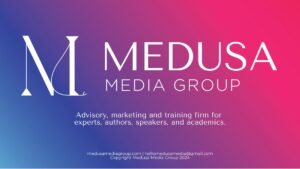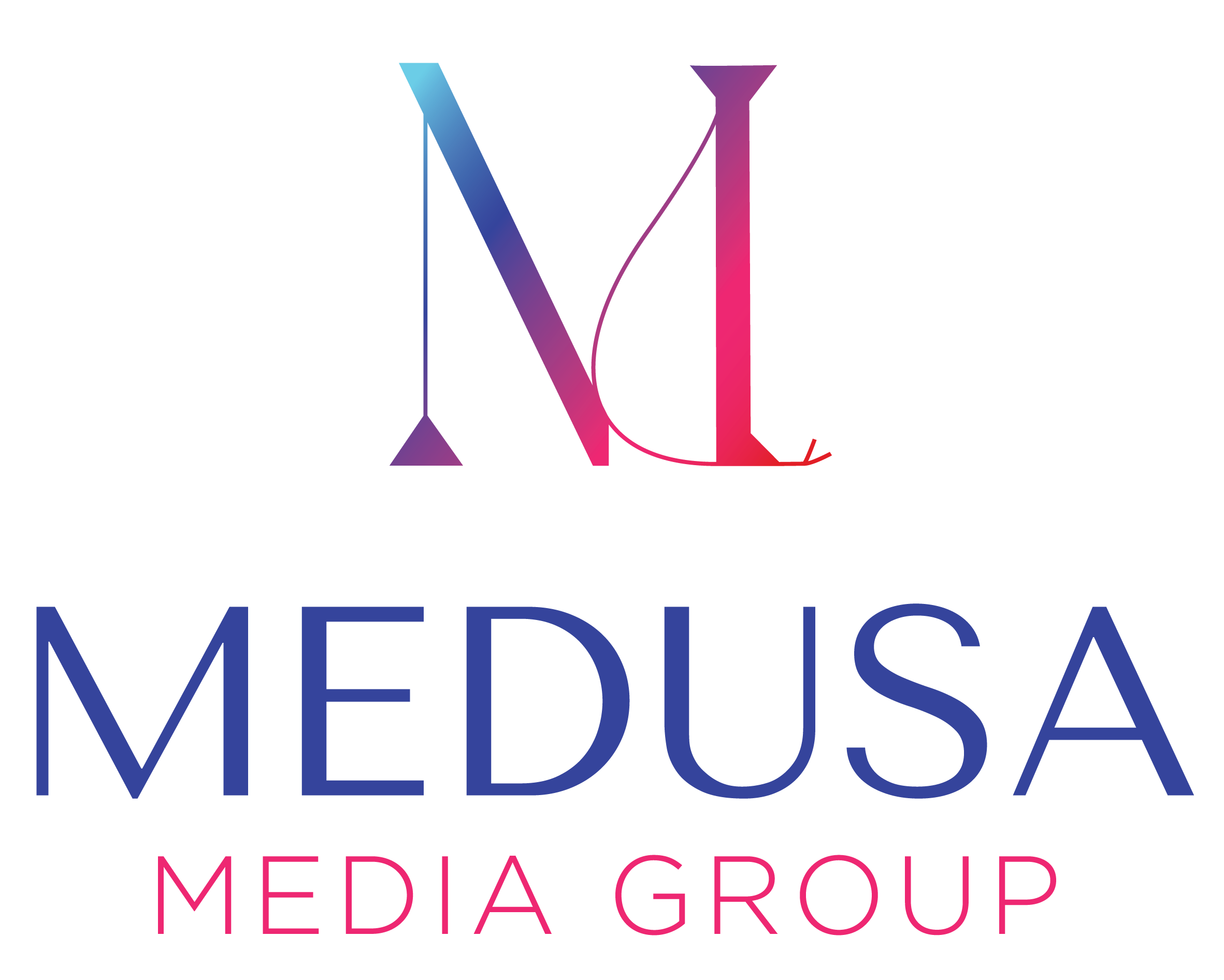Hi there. 👋 Here you’ll find answers to FAQs about LinkedIn strategy, such as “should I put the link in the post or comments? Why?” and “are hashtags dead?” and “will using a scheduling tool hurt my reach on LinkedIn?”
If you’re new here, welcome! I’m Eva Jannotta and I help experts—thought leaders, authors, speakers and academics—grow their online platform via LinkedIn, email, and content marketing.
TL;DR: LinkedIn’s algorithm changes all the time, so I recommend caution with how much you change your strategy to suit an algorithm’s whims. On the other hand, there are tweaks you can make to your LinkedIn strategy—such as putting posts in the comments and changing how you write posts—that will likely boost your reach and engagement. And good news: you can continue to use a scheduling tool, and you can stop using hashtags entirely!
Use the menu below to find the question you most want answered, and you’ll find a list of all my sources below. Now, on to the show:
Everything You Ever Wanted to Know About LinkedIn but Were Afraid to Ask
- Link in the post or comments?
- Do scheduled posts get less engagement on LinkedIn?
- Hashtags: are they dead?
- Just f***ing ask
- Pending: Engagement within the first hour?
- Pending: How important is video content?
- Sources
I also share my favorite social media scheduling tool (hint: MeetEdgar) and what to consider when choosing your LinkedIn content strategy. Let’s get right into it:
Links in the post or the comments (or no links at all)?
You’ve heard the rumors: LinkedIn’s algorithm throttles links in posts. Outbound links in posts hurt reach and engagement. Links in the comments are the way to go.
Is it true? (Yes.) Below I’ll get into why this makes sense, why I hate it, alternatives that still let you share valuable content, sources and more:
- Why discouraging post links makes business sense for LinkedIn
- Alternatives to link posts on LinkedIn
- How to choose your LinkedIn content strategy
Why, LinkedIn, why? 😭
Kicking link posts to the curb, algorithmically speaking, makes sense from LinkedIn’s perspective as a company. It better serves their bottom line to keep people on their website, seeing the features and seeing the ads. But I called this a rumor. Is it actually true, and how do we know?
YES.
I link to my sources at the end of this post but the conclusion is: multiple tests have shown that LinkedIn does punish posts with outbound links—and I have heard confirmation from a LinkedIn employee that this is true. That means that links to LinkedIn newsletters won’t be throttled; only links to other websites.
Frankly, I hate this. I want to learn from experts and share education I find valuable. The easiest and most convenient way to do both is via—you guessed it!—posts with links: they’re easy to click and easy to publish and don’t require special maneuvering. And, education and information from reputable media sources are important for vetting and quality-control.
HOWEVER, I (grudgingly) concede that there’s an upshot to this. If you focus on providing value in your post content (rather than teasing the value of content in an article on another site), you’re “serving people where they are” (see writing for more on this). That’s good, right?
Right. But still, it’s limiting: you can’t provide much depth in a 3000 character limit post, and again: articles published by reputable media are important.
Nonetheless, LinkedIn will never consult us on their algo decisions so here we are. What are your options to provide valuable, informative, and scroll-stopping content while avoiding link posts?
Alternatives to Link Posts on LinkedIn
1. Put the link in the comments
This is the most common workaround. The problem with it is that it’s a worse user experience. It’s frustrating to have to comb through comments to access the article everyone’s talking about. LinkedIn briefly allowed you to pin comments, which at least ensured it was easy to find the linky-comment, but not anymore.
And, if you’re visually impaired or have challenges with your motor skills, combing through comments to find the elusive link is tedious at best and prohibitive at worst. Per Axbom has a helpful piece with more about this and I recommend it: Why ”link in comments” is a bad idea for LinkedIn accessibility.
I wouldn’t be surprised if the algo starts punishing links in the comments eventually, too. In fact, Sangfroid Studio and SocialPilot state that you shouldn’t be the first person to comment on your own post.
They don’t provide evidence that commenting on your own content hurts reach, but it wouldn’t surprise me—if LinkedIn wants to encourage community engagement and discourage outbound links, punishing self-commenting a link would be a straightforward way to do so. Point is, don’t get too attached, and consider this next approach:
2. Don’t share links at all
👍 Why I like this:
On one hand, it’s a great practice to give people the information they want without asking them to leave and read something else. It’s convenient for readers (and LinkedIn loves it too for bottom-line reasons). You can still provide valuable education (albeit shorter form) by summarizing points from an article, quoting and/or tagging the experts, even including the title of the original article so avid nerds can find and read it at length.
Think of your LinkedIn post as the CliffNotes, plus some networking best-practices. This link-independent format is also The One for riffing and storytelling posts, two post types that we’re investing in more heavily for clients in 2025.
👎 Why I don’t like this:
Pardon me for being a snob but there’s a lot of unoriginal, marshmallow content on LinkedIn. Instead of interesting ideas and stories, I see a lot of mimicry and platitudes and “best practices” disguised as new thinking. Punishing link posts opens the door for MORE of this—in absence of being able to link to a good article, I suspect many will
- panic and say nothing, depriving us of their contributions or
- follow suit and share blasé nonsense (lookin’ at you, broetry).
My friend, video producer Andy Robinson, said it this way: “we need more credible experts online.” There are many ways to build credibility, and citing sources, related experts, and resources are involved. So while link-free content appeals to me on many levels, it does have limitations.
3. The “write-post-edit” method
This is where you publish your post sans link, wait for about 20 minutes, then add the link in. John Espirian wrote about it here, and notes:
“I don’t believe this works as effectively as it used to in 2020 and 2021. However, as visibility penalties for editing posts seem to have diminished in recent times, there may still be some value in this method. Note that editing a post to insert a link means that the post will not display the link thumbnail.”
How to choose your LinkedIn content strategy
Let me be clear about my bias: my priority is user experience over what “the algorithm” wants, and my outlook is that LinkedIn is a tool. We use the tool as a means to an end, but as soon as we start pandering to the tool, it’s using us. I think I’m right (obviously), but: I know my bias makes me resist making tweaks to our content strategy that will both provide a good user experience and make the algorithm happy.
Given that LinkedIn can change its algorithm any ol’ time without our consent, we are future-proofing our LinkedIn content strategy by:
- Sharing a variety of post types and flavors. I recommend 50-70% original content to 30-50% curated, and a mix of educational, storytelling, riffing, offer, and feature flavors. I also recommend experimenting with different mediums: text, video, imagery, carousels, and more. Variety helps keep your content engaging with the diverse array of people in your audience, which signals to LinkedIn that your content is popular and valuable.
- Creating posts that serve people with the content alone. We think of this as “synopsis” over “teaser” content. This provides value without people needing to go/click elsewhere and makes for longer posts which signals to the algorithm that folks are spending time on your work.
- Proactively commenting on other people’s work to grow and strengthen your network. It’s my opinion that comments you write yourself are more valuable than AI-generated ones, but that’s a topic for another blog post.
- Respond to comments on your own posts. Don’t ignore the people who engage with you!
- Use DMs, both text and voice memo, to privately grow and strengthen your network. See the Just F***ing Ask section for more. 😉
- Don’t rely solely on LinkedIn for all your lead generation, network growth, audience growth, or really anything.
If you have questions about how any of this works and you’re curious about working with me, fill out our brief inquiry and we’ll talk.
Do scheduled posts get less engagement on LinkedIn?
Another rumor! You’ve probably heard it about social media in general: that scheduling posts using a tool like Buffer or Hootsuite hurts your reach and engagement, and the only way to avoid this is by posting manually in real-time (or, presumably, using LinkedIn’s native scheduling feature) which = inconvenient.
This *might* work for you if you…
- have an employee or contractor dedicated to social media (me neither), or
- do well with all spontaneity and no advanced-planning (me neither), or
- you’ve figured out a Goldilocks social media content calendar that is somehow user-friendly and flexible and easy to maintain (me neither, and I’ve never met another expert or thought leader for whom any of the above is true).
But is the rumor even true? No. Which is great news: There is no evidence that posts using a scheduling software get less engagement or reach on LinkedIn. Cue a deep sigh of relief.
But are there any caveats?? Why wouldn’t you use a social media scheduling tool? Let’s discuss:
- Your scheduling tool is the cake (you can add icing)
- Advice to ignore
- Why people think scheduling tools hurt reach
- The scheduling tool we use at Medusa Media
Your scheduling tool is the cake (and you can add icing!)
The benefits of social media scheduling tools are many (Tactycs has a good overview, plus what to consider if your engagement is low) and this is what I always say to clients:
“Attention goes where energy flows.”
Meaning: what’s great about having your social media consistently prescheduled is you don’t have to think about it. You don’t have to rely on elusive inspiration, you don’t wake up at 2 AM thinking oh-shit-I-haven’t-posted-in-three-weeks, you don’t have to cudgel your brains about what to say and how and when. AND, if and when you ARE inspired, if and when you have something you want to talk about in the moment, YOU CAN DO THAT TOO.
And you may find that those posts outperform many of your prescheduled ones—not because you didn’t use a scheduler, but because you spoke from the heart about something timely and topical and energized. Your audience will pick up on that and respond accordingly.
It’s both/and: have a schedule that lets you reap the benefits of consistency, and add icing to that cake when the spirit moves you.
Some advice you can ignore
“Good” marketing advice can be alienating for experts and thought leaders. You read it and it sounds wise, but it’s often difficult to actually DO, and it’s not clear if doing it will make a measurable difference. Case and point, Google offered me this advice when I was researching this section (bolded emphasis mine):
“Social media schedulers have provided remarkable convenience by allowing us to pre-plan and batch-process content, ensuring a consistent posting schedule. However, there’s a significant trade-off: visibility. Many social networks, including LinkedIn, have started deprioritizing link-based content, which tends to be the bulk of what we schedule through these tools…. That’s because the social media algorithms prioritize fresh, dynamic content that engages users in real-time. Social networks are also in the business of keeping people on their platform as long as possible, which videos and photos (and, in the case of LinkedIn, sheer text posts) help them do.
Living in the feed is essential for understanding what content is currently resonating. Algorithms favor content that garners immediate engagement, and being in the feed enables you to interact with other users and contribute to trending conversations in real-time. This daily engagement provides valuable insights into content types and formats that are currently performing well.”
“Living in the feed”!? No! Just no.
You don’t have to live in the feed to grow your audience, opportunities and authority on LinkedIn (see our Client Impact Reports or capabilities deck for examples of clients success that did not require “living” in any “feeds”).
And if you’re an expert or thought leader who’s writing a book or articles, teaching, consulting, and speaking, I can GAH-RON-TEE you don’t have the time or inclination to live in your feed, no matter how on-point it sounds as marketing advice.
Besides which, this marketing advice doesn’t offer any evidence that the claims are true. I came across a LOT of unsubstantiated claims about scheduling tools throttling reach—some heard it from so-and-so at such-and-such conference, but many didn’t offer even a whiff of a citation for the claim.
Next.
Why do people think scheduling tools hurt reach?
According to a 2020 article by Tim Hill of Social Status, it may be because as social media platforms have created their own scheduling function, it gives the impression they want to replace 3rd party scheduling tools—perhaps for the same reasons I mentioned above about why LinkedIn punishes outbound links.
But there’s no evidence that this is true, and social media platforms making it harder to publish content at all would also fly in the face of their business goals.
He said, she said, and your mileage may vary, but: until I see research-based evidence that there’s a difference in performance between natively-scheduled and 3rd-party-scheduled content, I’ll keep using a scheduling tool for all the additional convenience, archiving, planning, rearranging abilities it offers.
Speaking of social media scheduling tools, I use MeetEdgar
I like MeetEdgar because of how it’s library and archive are organized, and—this is the clincher—because it has a “ReQueue” feature. This feature automatically recycles content, consistently re-sharing evergreen posts to get the most mileage out of the most enduring thought leadership.
We keep a sharp eye on all our clients’ queues to make sure all content is optimized before it goes out regardless, but this feature means we don’t have to re-schedule the same quality content again and again (which I used to do and it involved a lot of copying and pasting).
I also like that MeetEdgar automatically loads the images associated with links and lets you select the image to create an “image post” rather than a “link post.” This is handy when it comes to the link-in-the-comments thing: you can still use the picture associated with the link, which saves you from having to add an image manually, but add the link in later to make the algorithm happy.
Hashtags on LinkedIn: do they help?
Short answer: probably not.
Long answer: I see a lot of posts on LinkedIn with hashtags sprinkled throughout or piles of hashtags below post text a la Instagram. Often, these hashtag piles include words already mentioned in the post itself. Great news! Using a term twice, once by itself and once with a hashtag, is redundant and unnecessary.
I learned this from the horse’s mouth, when alumna client Charlene Li invited me to a training with a LinkedIn Community Manager for Executive Voices, who said:
“LinkedIn’s search function searches all text in every LinkedIn posts. Adding a hashtag before a key term doesn’t make it more searchable on LinkedIn.”
In other words: if you use the word “leadership” in your LinkedIn post, it doesn’t help to add #Leadership. If you want to improve reach or searchability you could add hashtags of related terms that you didn’t use in the post, like #CSuite, #CEO, #Management, and more (Btw, you should always capitalize the first letter of each word in a hashtag for accessibility, and this is why.)
HOWEVER. According to research by Richard van der Blom in 2024, hashtags are dead. He writes on LinkedIn, “Over the past 8 months, hashtags have had zero impact on reach, and LinkedIn has quietly disabled many hashtag related features although there is still no official statement from LinkedIn itself.”
If I were a wagering woman, I’d say you could forgo hashtags entirely and focus on tried-and-true engagement tactics instead. My company will likely begin phasing out hashtags soon—while part of me would like to wait for an official statement from LinkedIn, the other part of me is pretty convinced.
Just F***ing Ask (a favorite engagement tactic)
You’re still here! Whether you’ve read this whole honking post or skipped right to this section, I’m glad you made it to my favorite engagement tactic, which I like to call: Just Fucking ASK (JFA).
- Why asking works
- Overcoming the awkwardness of asking
- Reframing the ask from “favor” to “relationship”
- How to start your JFA practice
Why asking for engagement works
There is no shortage of “hacks” and “tips and tricks” to “beat” the algorithm that get published every year. Some of them are handy and useful, but many are, in my humble, unrealistic for the busy authors, speakers, academics, and other experts I work with.
But one engagement tactic I will always standby is the most simple and most vulnerable: asking for it.
Not in a spammy way. Not too often. Not spaghetti-at-the-wall style. But thoughtfully and genuinely, while keeping the sanctity of your relationships in mind. Tom Critchlow explains this beautifully in his oft-read (by me) post on riffs:
“…the REAL MAGIC of the riff is deliberately sending it to people… This means that you’re guaranteed to have at least one person to send the post to in their DMs. And if it’s relevant for that one person, chances are you’ve made it interesting to 3-5 others too.”
When you want engagement, what’s a more thoughtful and selective way of asking for it than reaching out to 3-5 people you know well, and saying “hey, I just wrote this and it made me think of you for X and Y reasons. I’d love to hear what you think”?
The awkwardness of “just asking”
One downside to JFA is that it feels vulnerable. When you imagine doing it, it might bring up questions like: “what if I seem desperate or needy? What if they ignore me? What if they think I’m an upstart for asking?” One client put it this way:
“I felt awkward doing this and I’m not sure I saw a bump in engagement. It felt odd not sending personal messages and I can’t ask you to do that, because you’re not me. Besides, the people I know most about in terms of [my expertise] are often my clients and I would never ask them to share my stuff.”
I get that. It’s normal for this practice to feel awkward/uncomfortable/exposing. But I think it’s worth exploring before writing off the tactic entirely. And my client was right: personalized messages tend to be most effective. They’re not scalable, but that’s okay—“scale” isn’t the only measure of value.
Now, let’s bring in some math: the semi-personalized messages I sent for this client’s newsletter got a 60% response rate. The resulting comments accounted for 20% of the comments on that newsletter—more if you only count “quality” comments. To me, those metrics are a green light.
Reframe JFA from “I need a favor” to “I thought of you”
What helps manage the vulnerability or awkwardness is to reframe what you’re doing. You’re not begging for engagement favors because you’re a pathetic loser, you’re sharing valuable, relevant work to a few hand-picked colleagues. Your attitude and the energy with which you JFA make a difference. Consider:
- “Hey I really need engagement on this, will you Like it and leave a comment real quick?” vs.
- “Hey Jenn, I just posted about the challenge academics face in building their personal brand, because it isn’t always encouraged by universities. It reminded me of our conversation on this exact topic, and I’d love to know if you have anything to add to what I wrote.”
See what I mean?
How to start your Just F***ing Ask practice:
If you’re curious to try this out, here’s what I recommend:
- Start by writing out the names of 3-5 people your content makes you think of. Even if you never send them anything, discover what the practice of thinking about people feels like and engenders.
- Trust yourself. Perhaps once you think of those names, some genuine enthusiasm for their insights will grow. And perhaps not!
- If it does, consider sending them a personalized DM. I recommend a private DM or email instead tagging them in a comment or even the post itself. That’s because by nature of being private, DMs and emails make the recipient feel individually sought-out. You making the effort to personally ask for their input is what strengthens your relationship.
I called JFA-ing an engagement tactic above, and yes sure. But it’s as much a relationship-building practice as it boosts engagement on your LinkedIn post. And isn’t that a big reason why we bother to use LinkedIn anyway?
How important is engagement within the first hour on LinkedIn?
How important is video content on LinkedIn?
These are two more FAQs about LinkedIn strategy that I’m happy to expound upon if it would be useful. I marked them as pending because, before I start writing answers (and thereby delay how soon I publish this epic) I wanted to make sure folks are interested. Hit reply on an email from me, send me a LinkedIn DM, or write me at evaj at medusamediagroup dot com to let me know if you’d like to hear my answers to these questions.
Sources
Links in the post or the comments?
- The LinkedIn employee’s confirmation came via a client; she heard it from a colleague whose LinkedIn presence is such that they have a direct contact at LinkedIn, 2024.
- Andrew P. Wheeler downloaded his data and did not find his link posts were being punished: “I don’t see that in my data at all.” 2024, LinkedIn posting and link promotion: impression vs reality
- “The link-in-comments posts performed better and had higher numbers from both an awareness and engagement perspective.” SproutSocial 2023, Sprout Tested: The answer to why you put links in the comments on LinkedIn
- “On average, posts without links got 6x more reach than posts with links.” Hootsuite 2021, Experiment: Do LinkedIn Posts With Links Get Less Engagement and Reach?
- How to Get People to Actually See Your LinkedIn Post, Sangfroid 2024. #4 suggests “don’t comment first”
- Beating the LinkedIn Algorithm in 2024: Expert Tips & Tricks, SocialPilot. #7 suggests “Don’t Comment on Your LinkedIn Post First”
Do scheduled posts get less engagement on LinkedIn?
- I couldn’t find recent research (post 2020) about this, and I’d love to. If you know of any, please send it my way! evaj at medusamedia group dot com
- “Within our data there was no conclusive evidence to suggest scheduling posts with Hootsuite or a 3rd party tool resulted in lower performance.” – Social Status 2020, Does Hootsuite or Buffer cause lower reach and engagement?
- “We did not find a significant difference in social media reach and engagement whether we posted through 3rd-party tools or natively to each network. As you might expect, some pieces of content performed better than others no matter how they were posted.” Buffer 2018, Do 3rd-Party Social Media Tools Negatively Affect Reach and Engagement? Our 200+ Post Experiment and Results
- This article has a good overview of social media scheduling benefits, plus what to consider if you think your engagement is low: Tactycs 2024, Do Scheduled Posts Get Less Engagement?
Are hashtag dead?
- #28 Update on Algorithm Insights 2024, Richard van der Blom on LinkedIn. You can download the full, 30-page report as well.
Just F***ing Ask
- Writing, Riffs & Relationships: Conversation is the unit of content by Tom Critchlow (many thanks to Sarah Eadie for sharing this with me)






